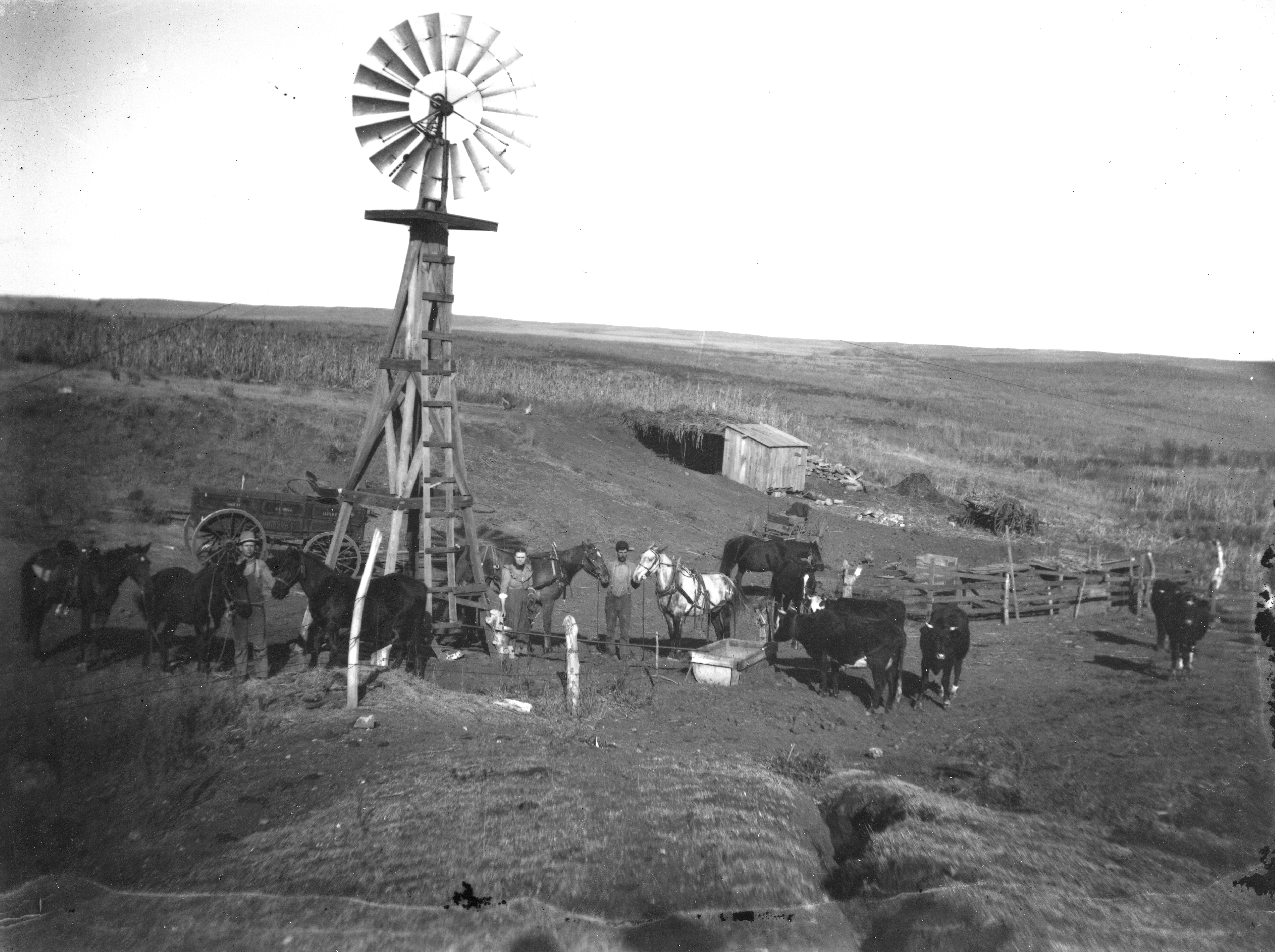
WINDMILLS.
Factory-made windmills have been used for pumping water on farms since the 1850s and for more than a century have found applications in Oklahoma. In the western portion of the state, a region known for its flat terrain, windmills and their towers constitute one of the few vertical elements in an otherwise horizontal landscape.
Daniel Halladay patented the first commercially successful self-governing windmill in 1854. His windmill not only turned to face changing wind directions automatically, but it also automatically regulated its speed of operation, preventing it from destroying itself from centrifugal force during high winds. This self-governing feature remains a unifying design element in windmills made to the present.
Starting with Halladay's design in the 1850s, company after company began manufacturing windmills to pump water for farmers and stock raisers. In addition to incorporating self-governing features, engineers in these companies initially designed windmills with wooden wheels and vanes. By the 1870s a handful of makers had introduced all-metal windmills. They gradually supplanted the wooden-wheel mills, becoming predominant in the trade by the turn of the twentieth century.
The next major design change for windmills came in the years around World War I when companies introduced so-called "self-oiling" windmills. On these machines the main castings doubled as covered oil reservoirs from which oil was elevated to lubricate the moving parts. All of the windmills made in the United States since the mid-twentieth century have been of this self-lubricating style.
The American Midwest became the center of windmill manufacturing in the United States. Illinois, Michigan, Indiana, and Iowa became centers for windmill making. With a few singular exceptions, states in the south and west such as Oklahoma became markets for these Midwestern manufacturers.
Only a handful of people attempted to manufacture windmills in Oklahoma. One such entrepreneur was Rufus W. Smith of Oklahoma City. On July 11, 1899, he received U.S. Patent Number 628,412 for a wind-powered pump. He produced at least a few of these wind machines under the trade name of Oklahoma Boomer.
Customers for Smith's Oklahoma Boomer windmill were the exceptions to the rule. Most Oklahoma residents who wanted windmills purchased machines manufactured in the Midwest and transported to Oklahoma by railways. The Baker Manufacturing Company, an important windmill maker in Wisconsin, distributed its products in Oklahoma and Texas through the Axtell Company of Fort Worth, Texas, and later in Oklahoma from a distribution point in Enid. Wherever they were made, windmills became among the most visible elements in the built environment of Oklahoma. There they remain standing as reminders of the importance of the wind as a renewable resource available to all.






